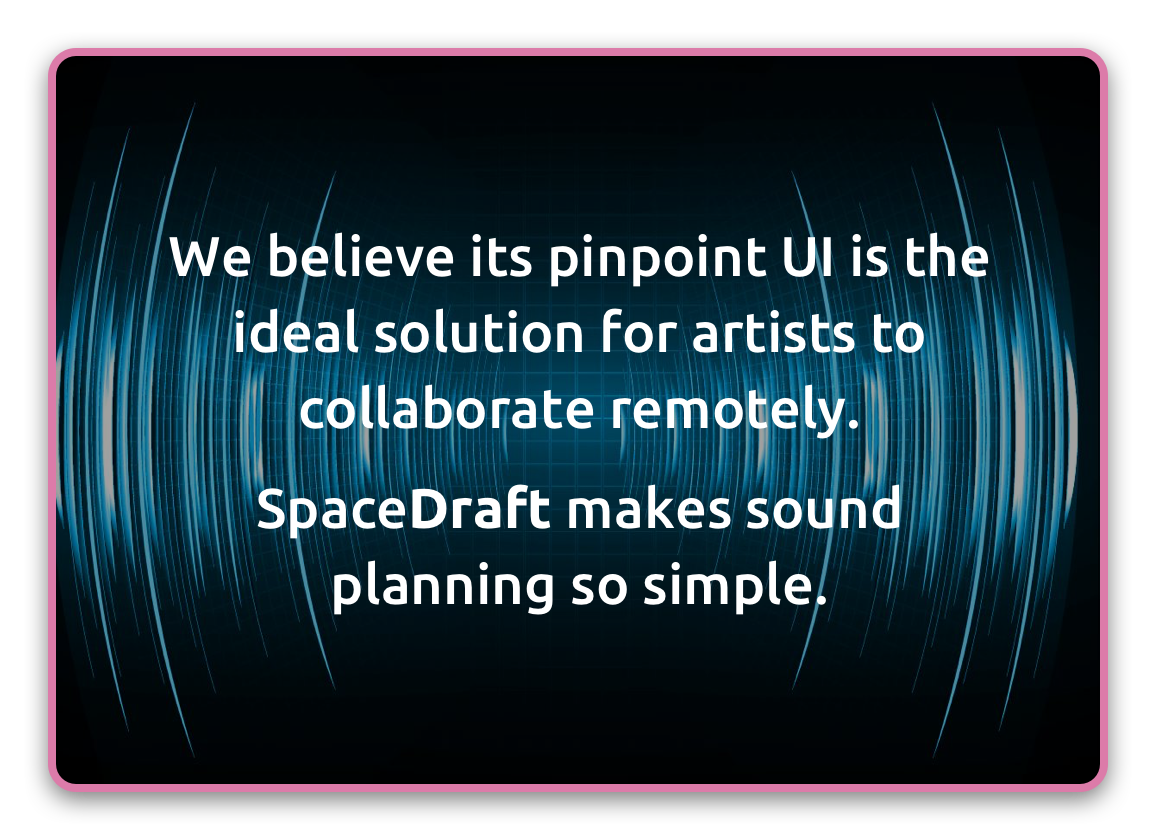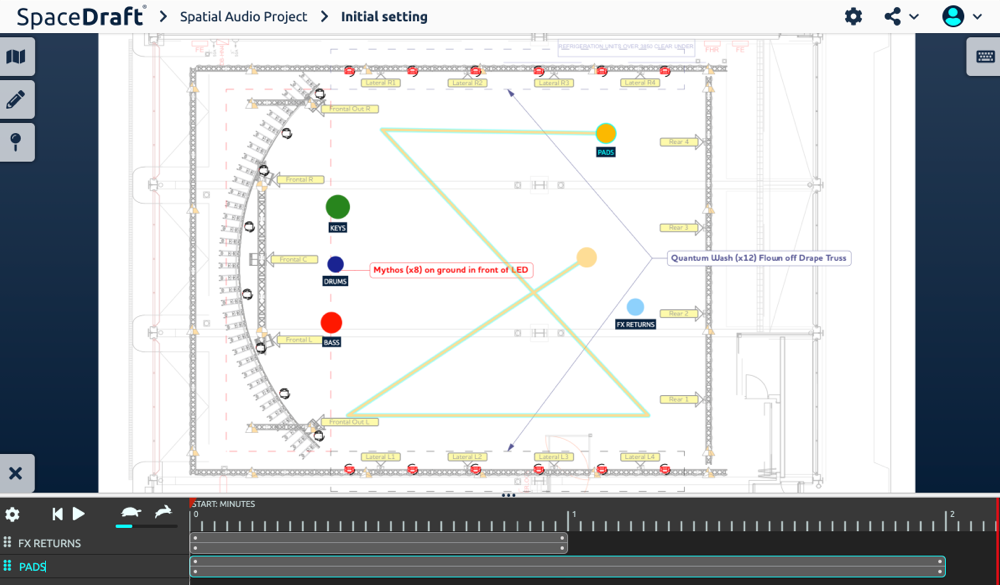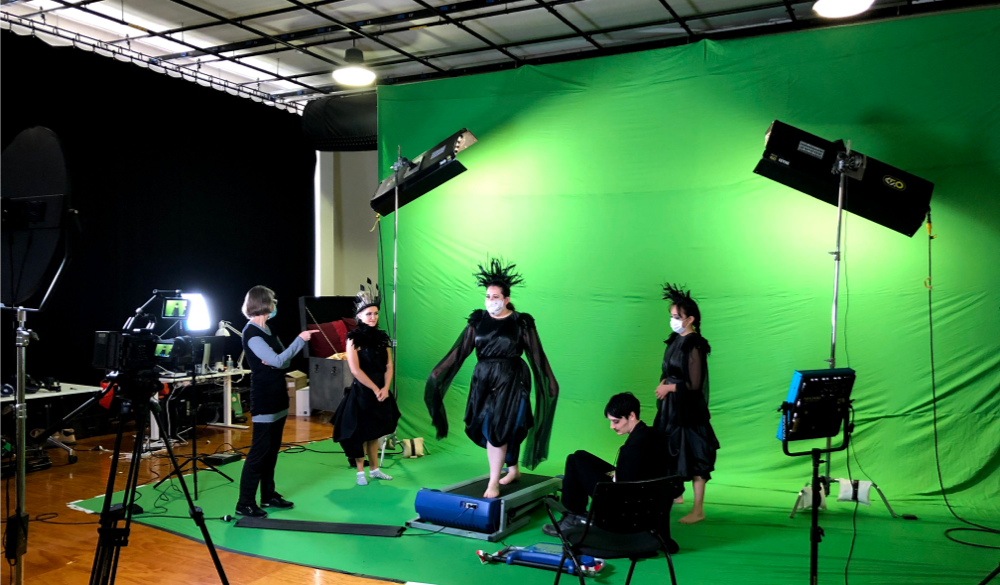Overview
Planning a spatial audio installation can be a tedious process where by the transfer of ideas are often lost in translation. Explaining complex sound concepts through words and sketches is an inefficient way to convey ideas across departments with varying skills.
SpaceDraft is an invaluable tool for streamlining this process, providing the platform for common understanding between creatives and technicians.
SpaceDrafting a spatial audio installation, users are able to…
 Use pins to mimic audio movement.
Use pins to mimic audio movement.
 Easily share creative ideas for 2D or 3D environments.
Easily share creative ideas for 2D or 3D environments.
 Collaborate across departments to ensure the vision becomes a reality.
Collaborate across departments to ensure the vision becomes a reality.
Existing Challenges
The process of planning a spatial audio installation is often fraught with roadblocks and typically falls into two categories:
-
Expensive with logistical challenges, or
-
Vague and ineffective
For option 1) the creative team behind the project need to be physically present in a dedicated spatial audio studio in order to convey how they want sounds to be placed within the 2D/3D field. This will lead to the desired end result but can be cost prohibitive.
Option 2) involves the creatives trying to communicate their vision for someone to remotely program their interpretation of the artist’s goal. There is no immediate feedback, leading to a time consuming process of revisions and changes.
SpaceDraft is the perfect tool to mimic audio panning movements of a source.
Fraser Walker, Live Sound Engineer
Solutions
SpaceDraft is able to overcome the problems in interfacing creative and technical departments. The intuitive interface allows creative ideas to be shared succinctly and easily.
Using SpaceDraft, creatives are able to outline how they want sounds to move around the space. The SpaceDraft can then be interpreted by the technical team and the artist’s vision can be programmed into the audio renderer.
Common understanding
SpaceDraft bridges the gap between the creative concept and technical implementation.Dynamic and impartial tool
SpaceDraft can be used and interpreted by stakeholders with varying technical skills to communicate complex ideas.Easily mimic sound scape
Visually convey flowing audio movement throughout the entire operation.Results
I look at SpaceDraft as a dynamic planning tool – wherever there is a movement that requires collaboration, SpaceDraft can be of benefit.
To date – most plans involving movement are conveyed primarily through words, and some sketches that jump from point to point. SpaceDraft allows the ability to visually convey flowing movement throughout the entire operation, rather than just the static checkpoints along the way.

Future Plan
Numerous spatial audio projects on the go, hopefully using SpaceDraft to assist with a smooth and effective pre-production period!
I also want to reach out to two friends who are in pre-production for the RUFUS DU SOL tour later in the year where SpaceDraft could be used to advance some of those large scale logistical challenges described above.

